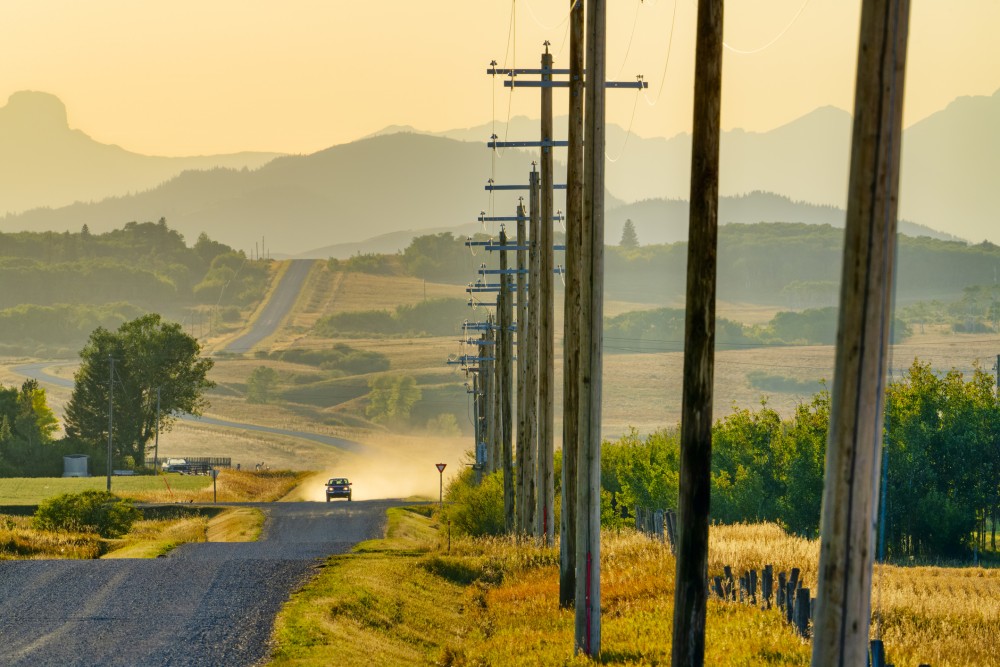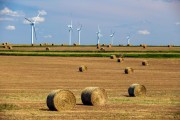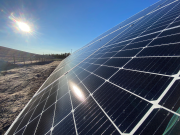Last month, the Government of Alberta published a press release criticizing the federal Clean Electricity Regulations (CER) that were finalized in December 2024. More recently, Alberta has called for the policy to be entirely revoked.
While Alberta and Canada are currently rocked by uncertainty caused by the actions of the United States, there are some deeper, longer term economic trends related to the energy transition that the country and the province must also pay attention to. The world is moving into an era that the International Energy Agency has termed the Age of Electricity – where more aspects of everyday life, from home heating, to the work we do, to transportation, are beginning to be powered by low-cost, locally produced electricity, rather than fossil fuels. It is in this context – of preparing the grid for that future, to unlock economic stability and growth – that the CER remains vitally important.
In this blog, I’ll unpack and analyse Alberta’s concerns with the CER, as outlined in the government’s latest public statements. As a summary:
- The final version of the CER included significant changes based on extensive engagement across Canada, including with the Government of Alberta and industry in this province.
- Alberta is right to be thinking carefully about electricity affordability and reliability, but the government is currently limiting its ability to meet these system outcomes by inhibiting renewables, storage, and grid modernization in general.
- The CER would provide a pathway for Alberta and industry to make the needed updates to the grid to prepare it for the future. While it has called for the revocation of the CER, Alberta has presented no alternate plan to do this.
The finalized CER gives Alberta’s gas generators more flexibility
First, a short summary of the CER: these are rules designed to provide a long-term timeline for reducing emissions from Canada’s power plants. They build upon 2012 rules that successfully resulted in almost every province phasing out coal-fired power from their grids. The CER was announced by the federal government in 2021, and following three years of consultations with the provinces, industry and other groups, the final version was published in December 2024.
During the consultations in 2023 on the first draft of the rules, the AESO and the Government of Alberta raised concerns publicly, most notably with the ‘Tell the Feds’ campaign that, amongst other things, alluded to the risk of Albertans suffering power outages in dangerously cold winter temperatures. The concerns cited by AESO and the provincial government were mainly around the future reliability and affordability of Alberta’s electricity supply, given its high dependence on gas-fired power stations – a key challenge that it and Saskatchewan face, in contrast to other provinces and territories, many of which have access to low-emitting options, such as nuclear and hydro. However, while it said it had a plan to achieve a net-zero grid, Alberta did not publicly make recommendations for alternative approaches or provide analysis to back up its claims on reliability and affordability; it only called for the regulation not to be implemented.
In response to Alberta’s concerns, as well as other feedback from industry and governments across Canada, the federal government undertook further engagement and added more flexibility in the rules for gas-fired power plants. The carbon intensity threshold for gas plants, as well as the number of years a gas plant built now could remain in operation under the CER, were both increased.
The final version of the rules balanced the reliability concerns raised by Alberta and other stakeholders, while still charting a clear course ahead for investment in clean electricity production. Despite the changes, Alberta’s latest statement in March appears to simply repeat its previous concerns around reliability and affordability, again without providing full analysis to back up these claims.
A clean, reliable, affordable electricty grid in Alberta is possible, but the province must take action to make it a reality
As it has repeatedly asserted publicly, Alberta has jurisdiction over managing the regulations and market rules of its electricity grid. To this end, Albertans should expect their government to do so in a way that sets the province up for future economic competitiveness and a high quality of life for all, especially as more of our end-uses become electrified. At present, the province is not making the best use of the available tools to meet these goals into the future.
Alberta has sidelined consideration of cost-effective and market-ready reliability options for the electricity system, such as expanded interprovincial interties and demand-side measures. Other jurisdictions with historically similar rules and resource contexts have shown that it is possible to integrate much more renewable generation while maintaining reliability and affordability. Alberta could accelerate no-regret solutions like smart grid technologies to optimize transmission and distribution infrastructure, modernize regulations to enable bulk energy storage and demand-side management programs, and set policy to develop interties with its neighbours and jointly study the shared benefits and market access opportunities those will provide. Its current trajectory on market restructuring, grid management, interties and demand-side management do not make the most of these solutions.
In previous assessments of grid decarbonization affordability, the AESO has underestimated the cost of natural gas and overestimated the cost of wind, solar and other grid modernization tools – or entirely ignored these options. Our analysis that addresses these issues found net savings for Albertans from moving to a low-emitting and modernized grid. Assumptions can change the results of an analysis, so any assessment of the future cost of a system needs to take into account both the volatility of gas pricing as a globally-traded commodity, and the ongoing significant cost reductions in solar, wind and energy storage.
On emissions: Alberta’s release states that “emissions will keep dropping without Ottawa’s interference”, but to date the province’s future-looking grid decarbonization plans have focused on carbon capture (CCS), hydrogen and nuclear – all of which the AESO called “early-stage” in the same release in March where it criticized the CER. This change in tone is surprising in contrast to the AESO’s most recent Long-Term Outlook in May 2024, where it projected that all of Alberta’s largest gas plants will be fully abated with CCS by 2031.
If the AESO is becoming less certain about the readiness of these technologies to power a low-carbon grid, it could accelerate the solutions that are already commercially available and economically proven – wind, solar and energy storage. Instead, Alberta created significant uncertainty for investment in these technologies through a seven-month pause on new project approvals, and added significant barriers to this once Canada-leading industry.
In short, Alberta is limiting the range of tools at its disposal to build a grid fit for the future – exactly the technologies that the CER guides investment towards.
Alberta is going for gas when the world is going clean
With global investment in clean power ten times higher than unabated fossil investments in 2024, Alberta is swimming against the tide by focusing on gas to run its grid long into the future. This erodes its attractiveness as an investment destination – given that we know demand for low-cost, clean power is going to keep growing as new power-hungry industries, like data centres, look for places to set up business.
Nearly two years since the first publication of Alberta’s Emissions Reduction and Energy Development Plan, details are still scant on exactly how the province is preparing itself to capitalize on the global shift towards low-carbon growth. Meanwhile, across Canada – whether it’s B.C., Quebec, Nova Scotia, New Brunswick, Ontario, Manitoba, Saskatchewan or Newfoundland and Labrador – provinces are taking active steps to grow their supply of electricity, with virtually all of that new supply coming from non-emitting sources. This is not just about keeping the lights on, but making sure Albertans aren’t left behind over the course of the next decade as their peers across the country, and across the world, begin to feel the benefits of a low-cost, low-emissions grid powering their strong, resilient, energy-secure economies.










